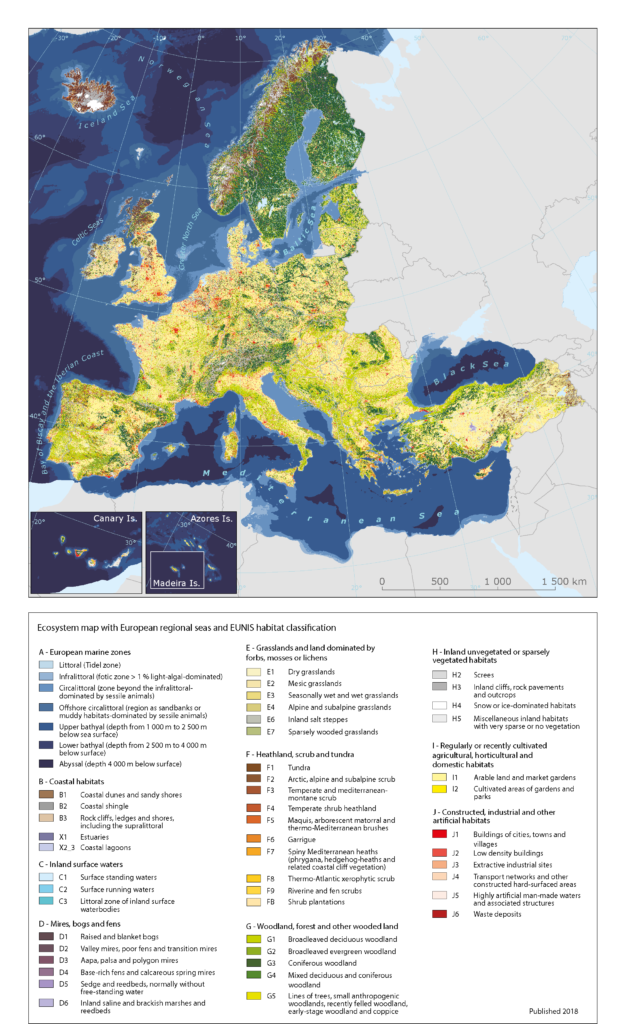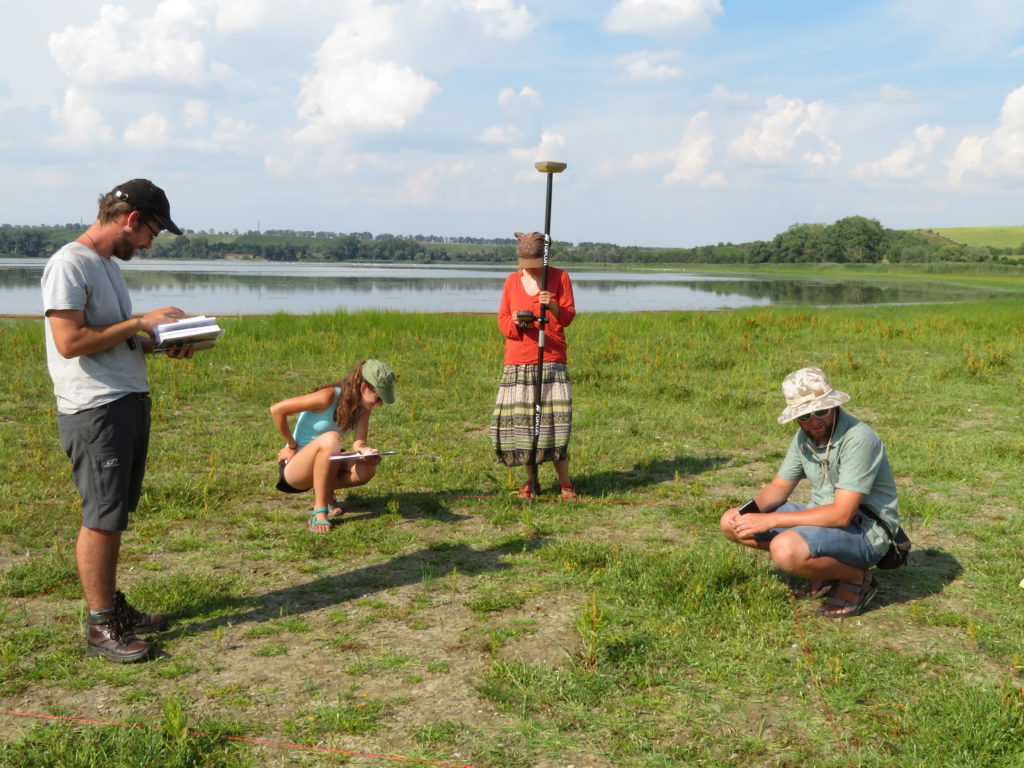This is a task of the Masaryk University, MUNI.
An effective integration of biodiversity into climate models heavily relies on the meaningful and detailed classification of vegetation structures along biodiversity gradients. Until now, vegetation classifications in climate models are comparably simple and the biodiversity component is entirely missing. A species-rich forest or grassland is treated similarly in its effects as its species-poor counterpart. Since species richness and its functional attributes are partly driven by climate drivers and responds with changes in physical structures when climate is changing, a better understanding of the biodiversity feedback to climate is needed. In WP4, we provide information on how to add more detail on vegetation structure and biodiversity (Fig. 1) to the dynamic simulations generated in WP2. We will apply the EUNIS Habitat Classification scheme, a standard classification of European vegetation used by the European Environment Agency (EEA). This classification will be applied to a set of approximately 1.6 million vegetation plots from the European Vegetation Archive (EVA) 26. The EUNIS types will be aggregated into classes that represent those modelled by the DVMs in WP2 & WP3. Vegetation classes will be characterized in terms of the floristic composition, ecology, dynamics, distribution, and economic or conservation value, which will be needed in WP7. Linking these classes and their species composition and richness to climatically relevant features such as their albedo, structure, etc. will additionally allow quantifying their contribution and feedbacks to the climate system (prepared in WP1, assessed in WP6).

Tasks
- Optimization of vegetation classification: An EUNIS classification developed by our team for the EEA will be used to classify vegetation plots from EVA into vegetation types to approximately 300 classes. These classes will be compared in terms of their plant functional trait spectra and biodiversity and merged into a smaller number of internally homogeneous classes that can serve as operational units for WP1, WP5, WP6 and WP7. A finer classification will be proposed for mountain vegetation and used as an input for WP3. The expert system will be adjusted to identify vegetation types directly at selected resolutions. Gaps in geographic coverage of these classes will be identified and closed as much as possible through targeted data acquisition via the EVA network and digitization of available data hardcopy sources.
- Species richness of vegetation classes: Vegetation types obtained in T4.2 will be used for species richness modelling based on the methods proposed by 27 and 28. Species data from vegetation plots will be divided into growth forms (e.g. trees, shrubs, dwarf shrubs, perennial herbs, annual herbs etc.) and leaf types (e.g. needle, evergreen broadleaf, deciduous broadleaf), and species richness of these PFTs and vegetation types will be modelled separately, assuming that diversity feedbacks may differ considerably among these plant functional types that determined the basic structure of vegetation. Species richness models will be recomputed after each run of the dynamic vegetation model in order to quantify the changes in species richness patterns due to changes in dynamic vegetation model.


Milestones
Deliverables
Cover image: Sharissa Johnson, Unsplash.